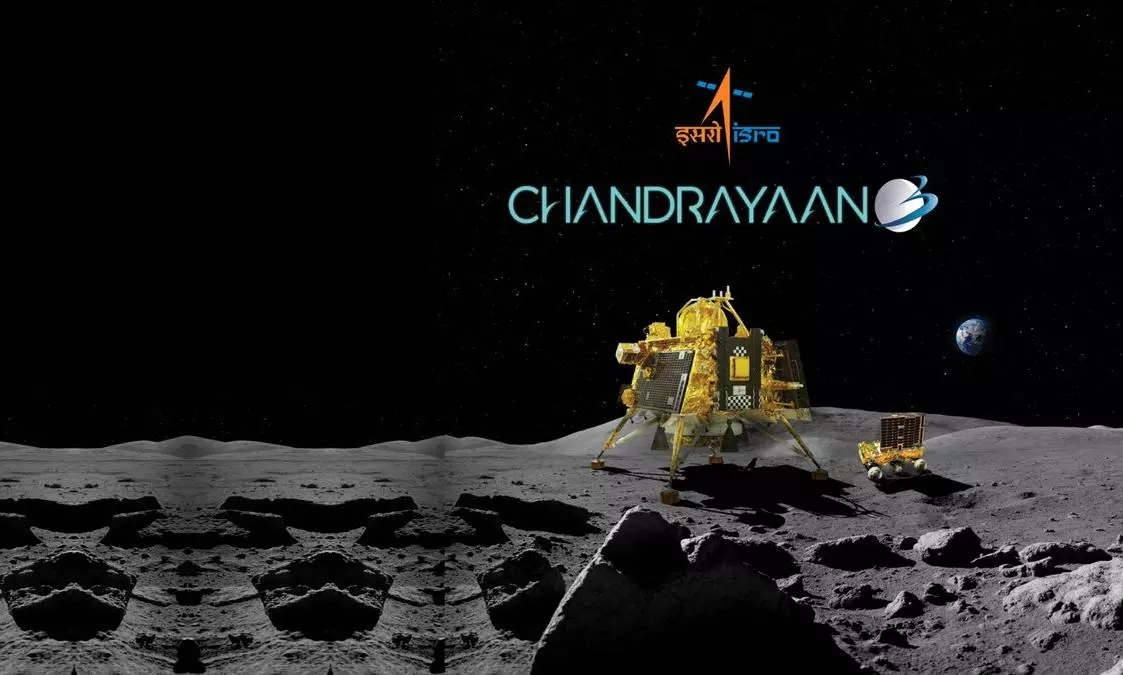Reaching for the moon: Supply chain viewpoint on Chandrayaan-3

Source: ISRO
From an awe-inspiring launch to its carefully planned landing, a space mission captures the marvels of scientific exploration and showcases the human pursuit of discovery beyond the confines of our planet. And such undertakings take on a special significance when they unfold closer to home. As Chandrayaan-3 successfully took off on July 14, 2023 from the Satish Dhawan Space Centre, the mission’s progress across extensive cosmic distance was being watched with bated breath. Given that the ghost of the failed landing of Chandrayaan-2 lingered in our minds, the success of this edition would symbolize a momentous step forward for us as a nation. And on August 23rd 2023, it all happened. Our country engraved its name in the lunar saga, as Chandrayaan-3 successfully landed on the Moon's South Pole. Regardless of the lander mission's outcome, the journey to reach the Moon three times itself stands as a testament to the Indian Space Research Organization (ISRO) and India’s scientific ingenuity overall.
From a logistician’s perspective, an intricately woven supply chain behind the entire mission was one of the pivotal enablers of this remarkable endeavour. In general, every space mission's supply chain involves various stages and components, be it design and development, scientific instruments and optimal payloads, or integration and testing. With a lift-off mass of nearly 3900 kgs, the Chandrayaan-3 mission exemplifies how modern supply chains function in the complex network of aerospace verticals. The entire mission was done at a frugal budget of Rs 615 crore, approximately US$ 80 million. Talk about maintaining an optimal balance between supply chain complexity and system costs!
While details of the mission-specific supply chain have not been revealed yet and may come sometime in the future, the available data indicates the intricacies of the Indian space programme. Based on the available data from 2020, ISRO has more than 11,000 suppliers registered and approved on its e-procurement site. Of course, with emphasis on indigenous manufacturing and local sourcing, procurement happens domestically, mostly concentrated around 13 key states. Only the avionics and satellite payloads are partially dependent on import sources. Further, these numbers include local private industry, which was only recently added to support ISRO for satellite manufacturing.
Source: ISRO website
Among these active suppliers are the who’s who of the Indian manufacturing sector. Larsen & Toubro (L&T) along with public-sector behemoths, Bharat Heavy Electricals (BHEL), Mishra Dhatu Nigam (Midhani) and Hindustan Aeronautics Limited (HAL), form the top suppliers who share decades of association with ISRO. In fact, these companies were greatly involved in the Chandrayaan-3 mission. In their public statements related to the Chandrayaan story, company executives talked about how all the subsystems had been delivered to ISRO ahead of schedule. This is a remarkable achievement considering the challenges in the aerospace supply chain, particularly concerning components.
Aerospace components often require specialized expertise and facilities for manufacturing, leading to a limited pool of capable suppliers, which can result in supply chain vulnerabilities and potential disruptions. A ready case study for this is the significant supply chain challenges in the Boeing 787 Dreamliner project. The company adopted a novel approach by outsourcing most of the manufacturing and assembly to suppliers around the globe. However, issues arose with coordination and quality control among the suppliers, leading to delays in the program's timeline and increased costs for Boeing.
Further, in a rapidly evolving technological landscape, safeguarding national security and sensitive design data from cyber threats becomes a critical concern for both ISRO as well as the supplier. To quote a case of a similar breach, sensitive data related to the F-35 Lightning II program was compromised in a cyberattack in 2018. As the F-35 program was a multinational effort, the breach affected both Australia and the United States.
Stringent quality and safety standards, long lead times, and dependency on specialized materials necessitate careful inventory management to avoid impacting production schedules. The case study of the Space Shuttle Challenger exploding 73 seconds after liftoff, due to the failure of an insignificant component like the O-ring seal, acts as a grim reminder of how quality control and attention to even the smallest details are paramount in ensuring the success of complex aerospace missions.
Given these challenges, the entire Chandrayaan programme is a showcase of Supply Chain resilience and risk mitigation. Discovery of water molecules on the Moon's surface by Chandrayaan-1 was a groundbreaking achievement. Chandrayaan-2 lander's experience with a hard landing on the Moon's surface underscored the importance of accurately understanding and accounting for the challenging lunar terrain. While the Chandrayaan-2 mission highlighted the volatile nature of such endeavours, ISRO as an organization showcased its ability to bounce back from setbacks, learn from failures, and continue pursuing ambitious goals. As a result of the accident, ISRO engineers had fortified Chandrayaan-3's software and hardware, creating multiple redundancies that helped it find its way down.
To conclude, Chandrayaan mission has captured the entire world's imagination and interest. The successful landing makes India only the fourth nation in the world to achieve such technical prowess. Other developed nations and private organizations have charted plans for sending manned crafts to the South Pole of the moon in the future. With India's lander getting to this challenging terrain first, we as a country secure a presence in the dialogue about shaping lunar governance. Looking beyond the moon, we heard about other ambitious missions seeking to explore the Sun and other planets including Venus. The success of Chandrayaan mission is not just about space exploration. It ushers a new era of aerospace supply chain in India.
The views and opinions expressed in this article are those of the author and do not necessarily reflect the views of Indian Transport & Logistics News.

Vikas Pawar
Vikas Pawar is a regular contributor and a supply chain specialist with deep experience in global trade and logistics strategy. Currently, he brings this perspective into the healthcare space as COO of Exsegen Genomics, a cancer-research company.
